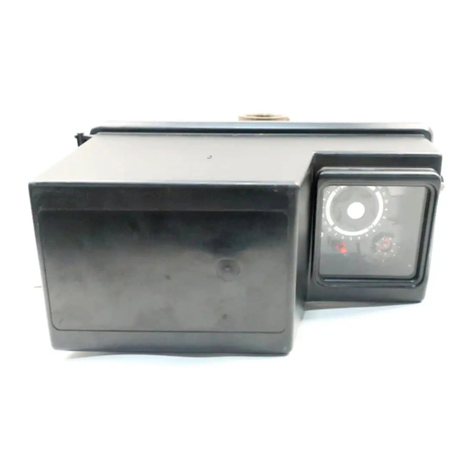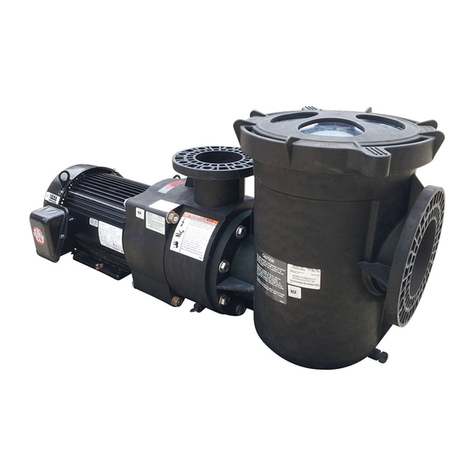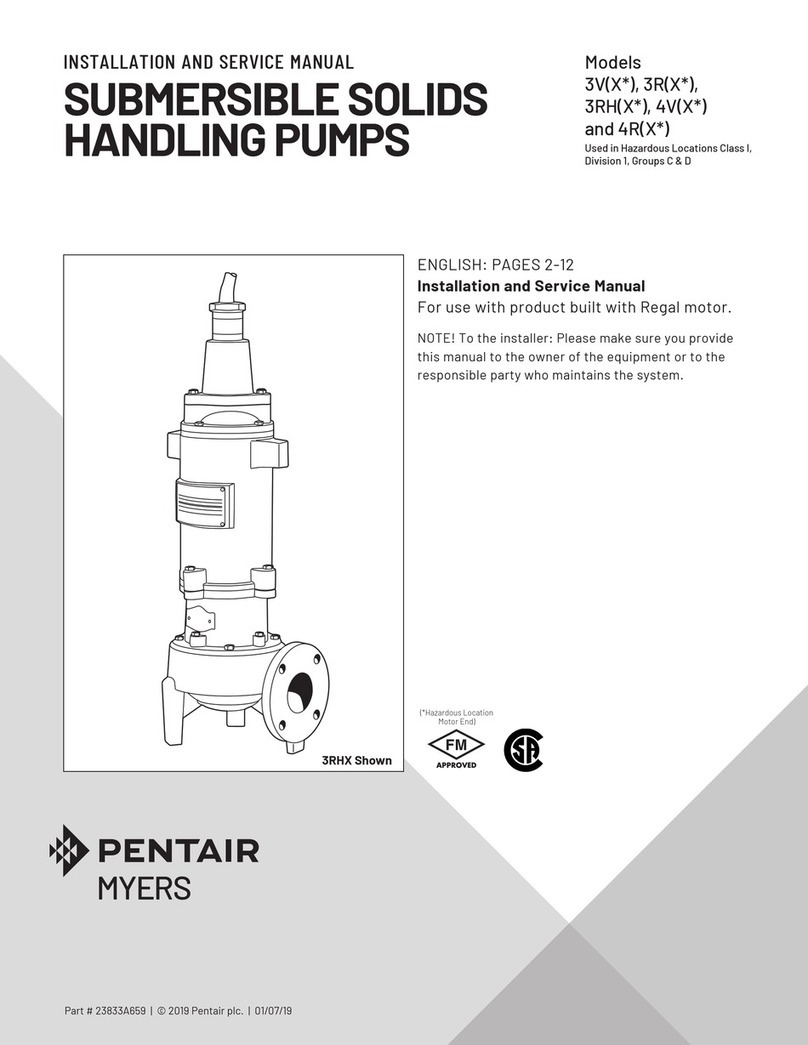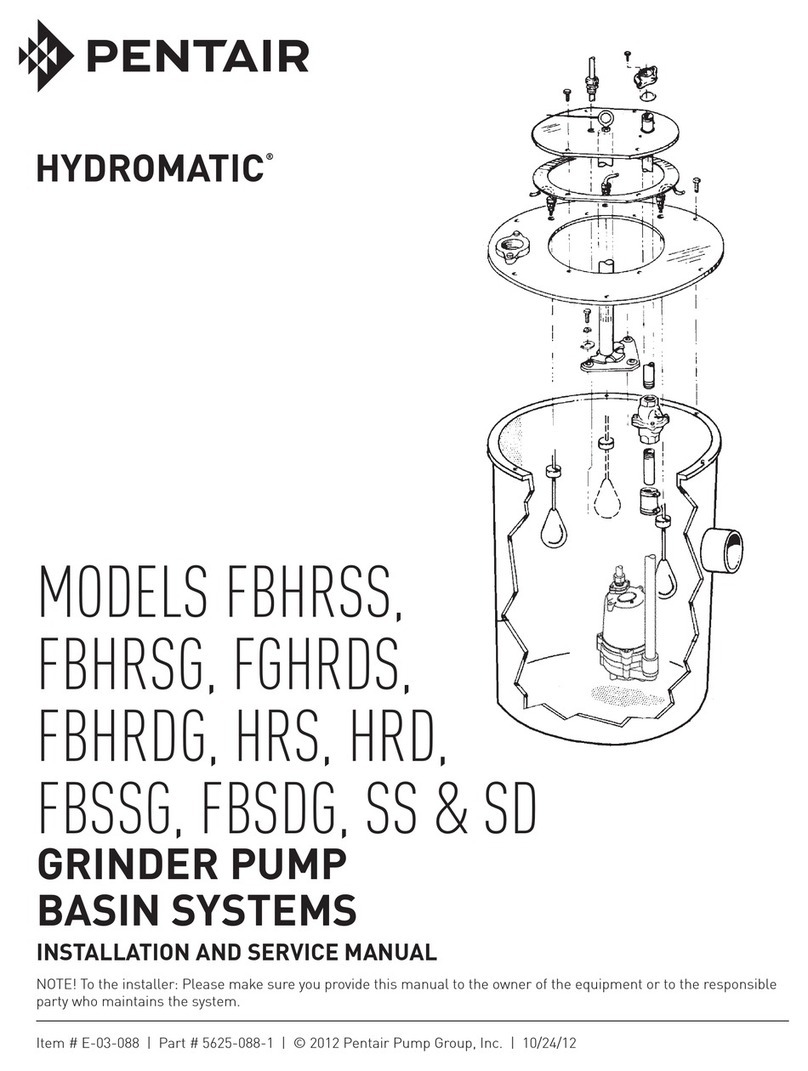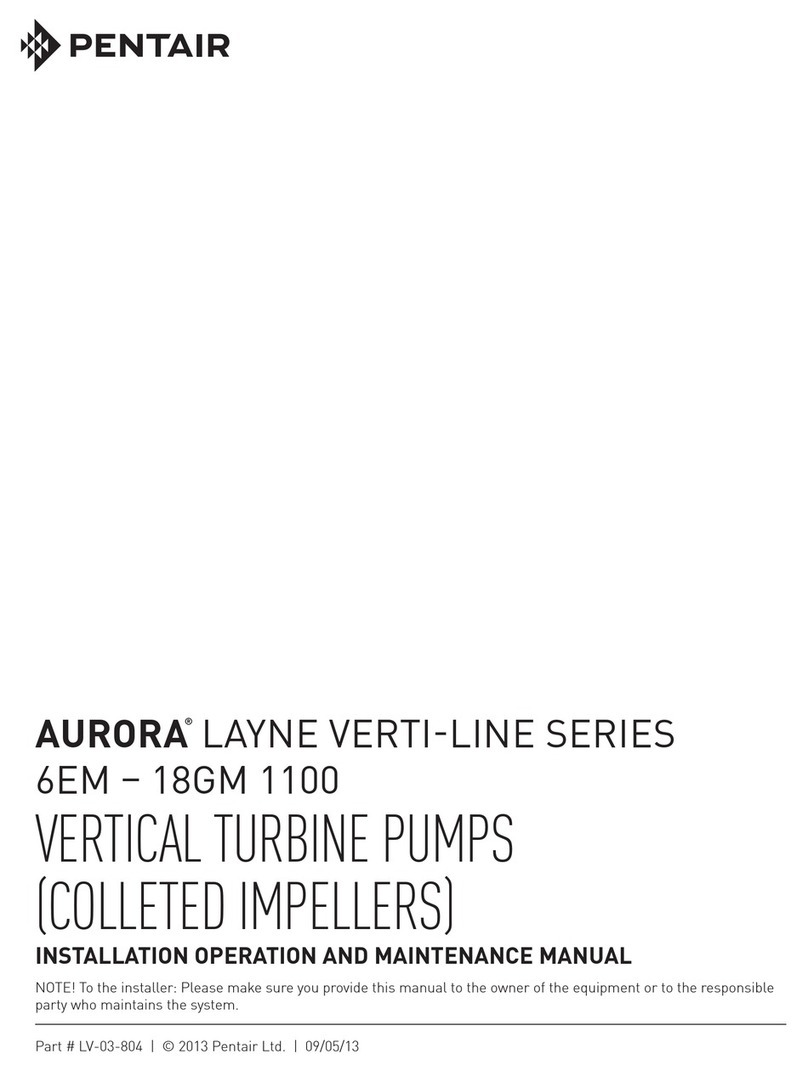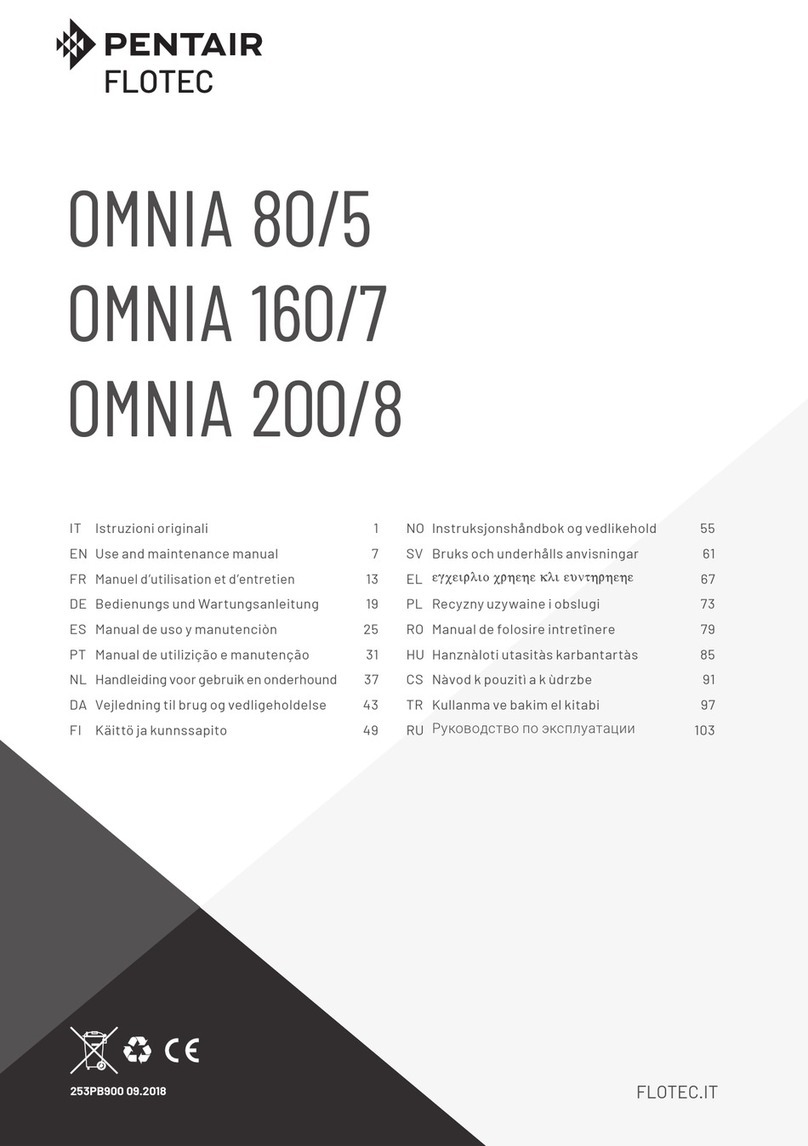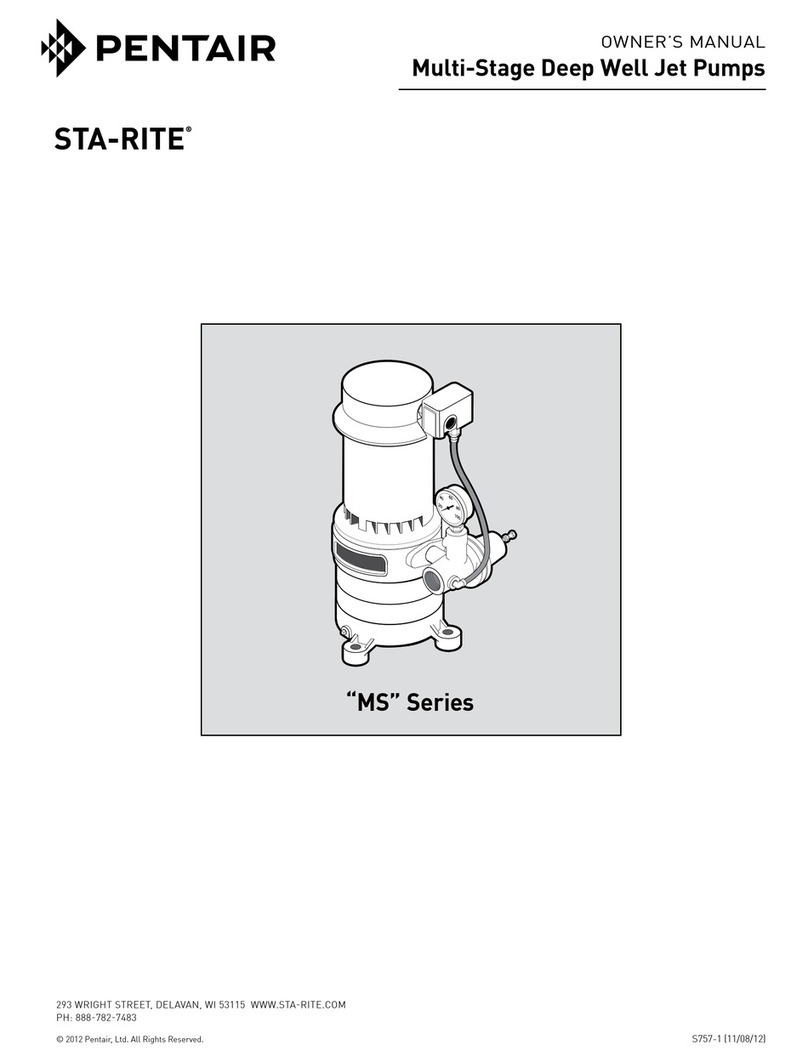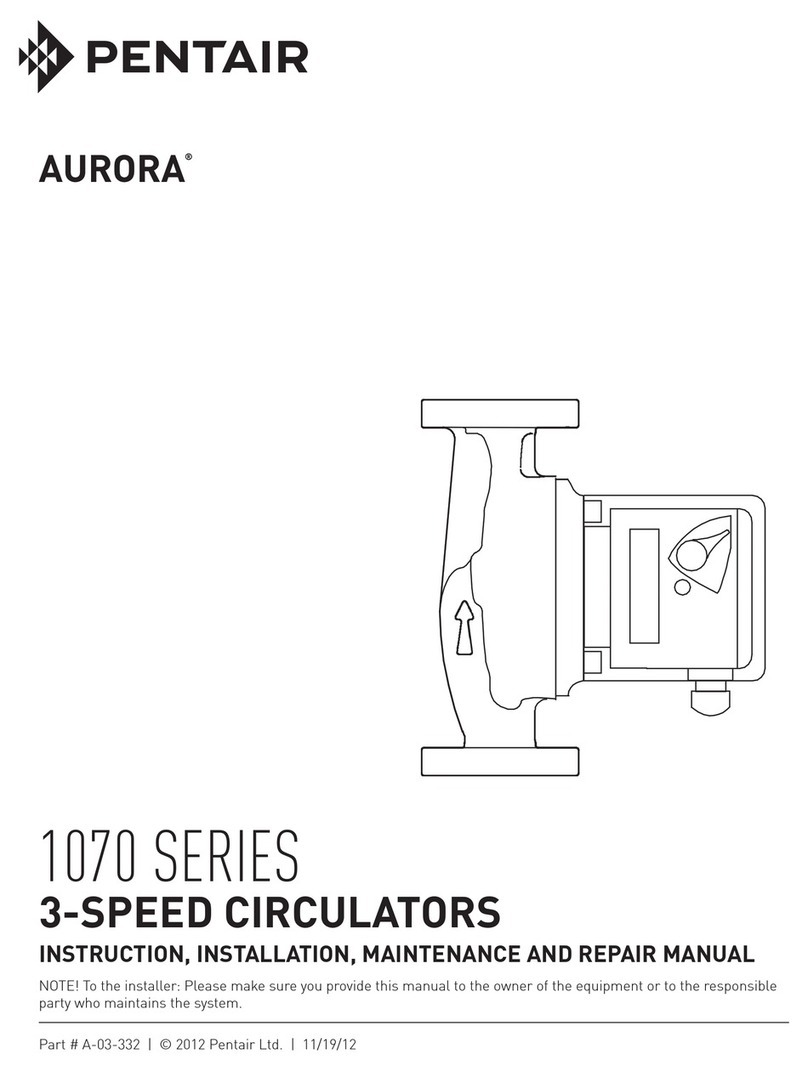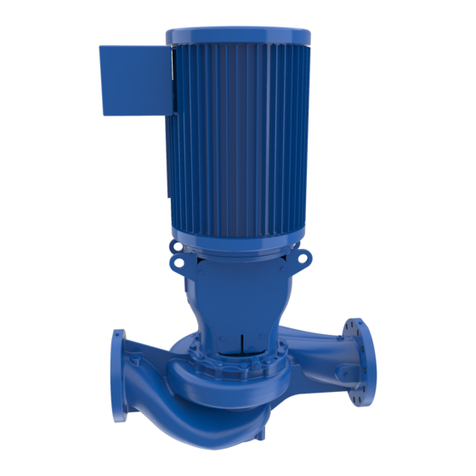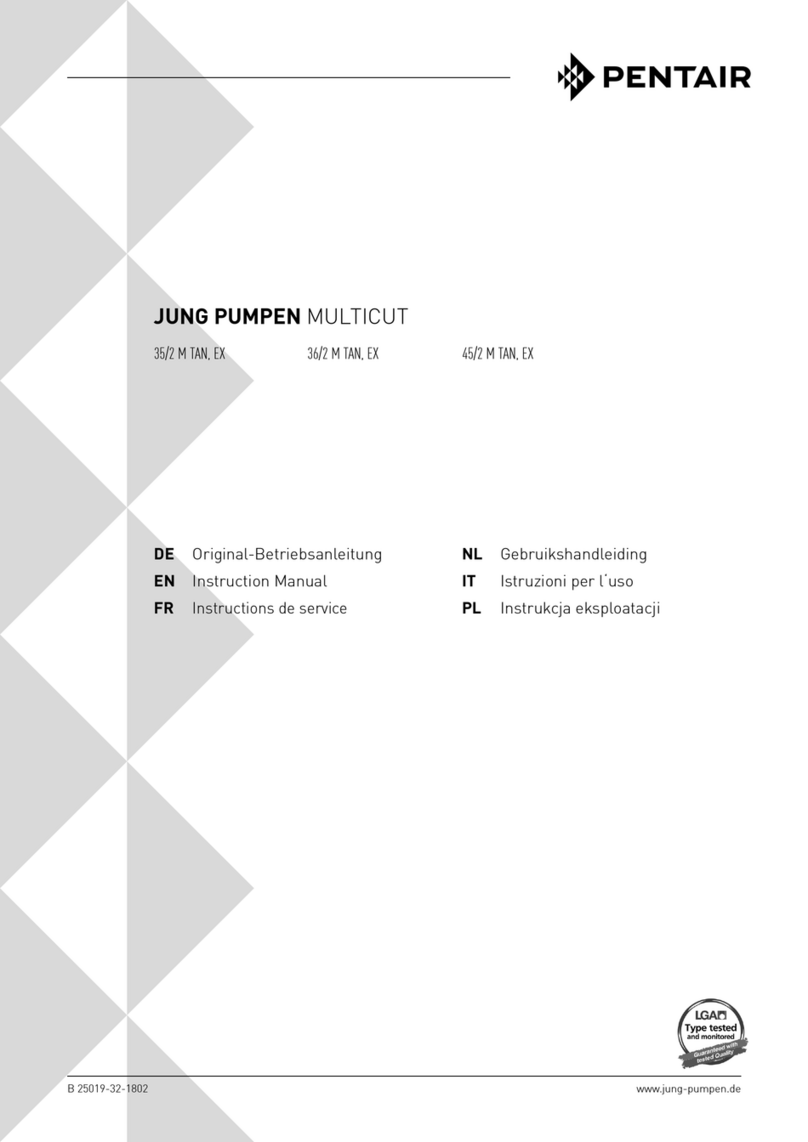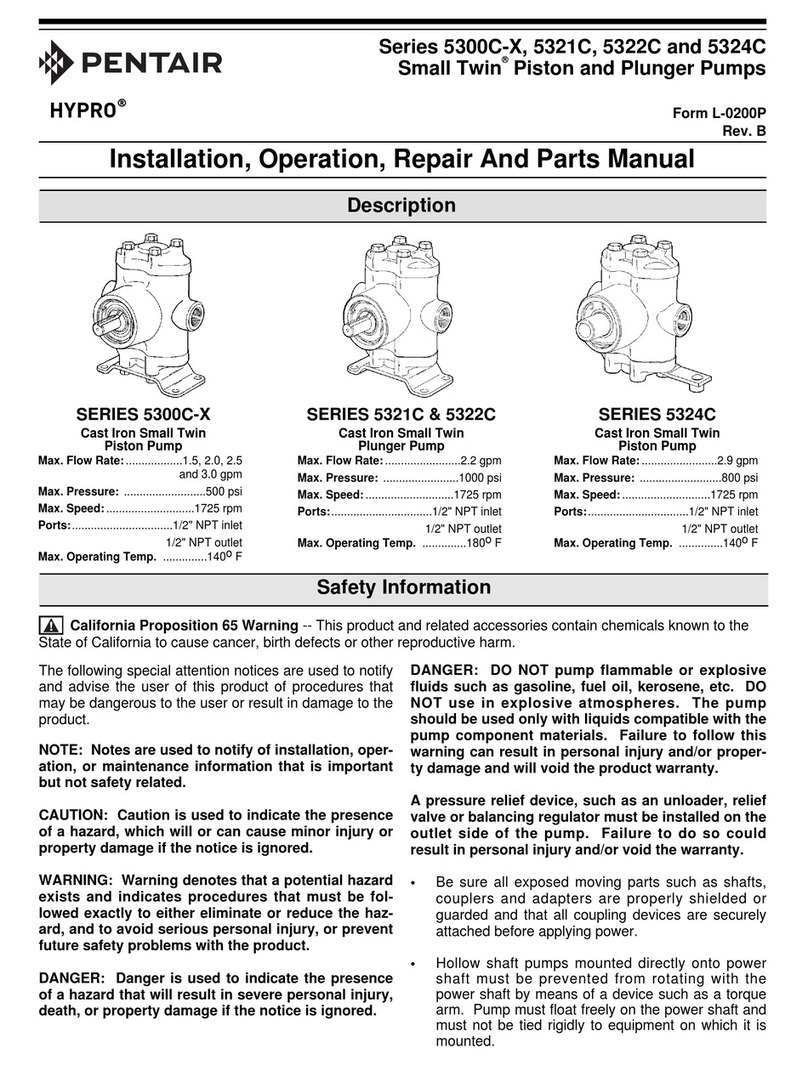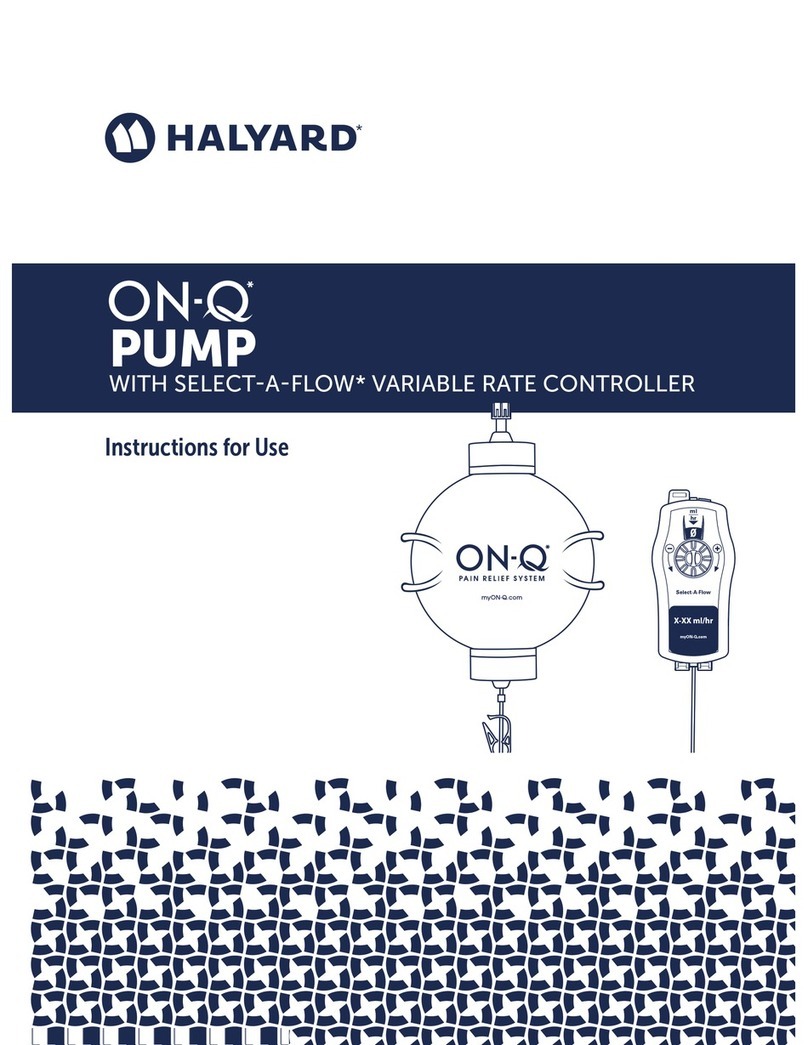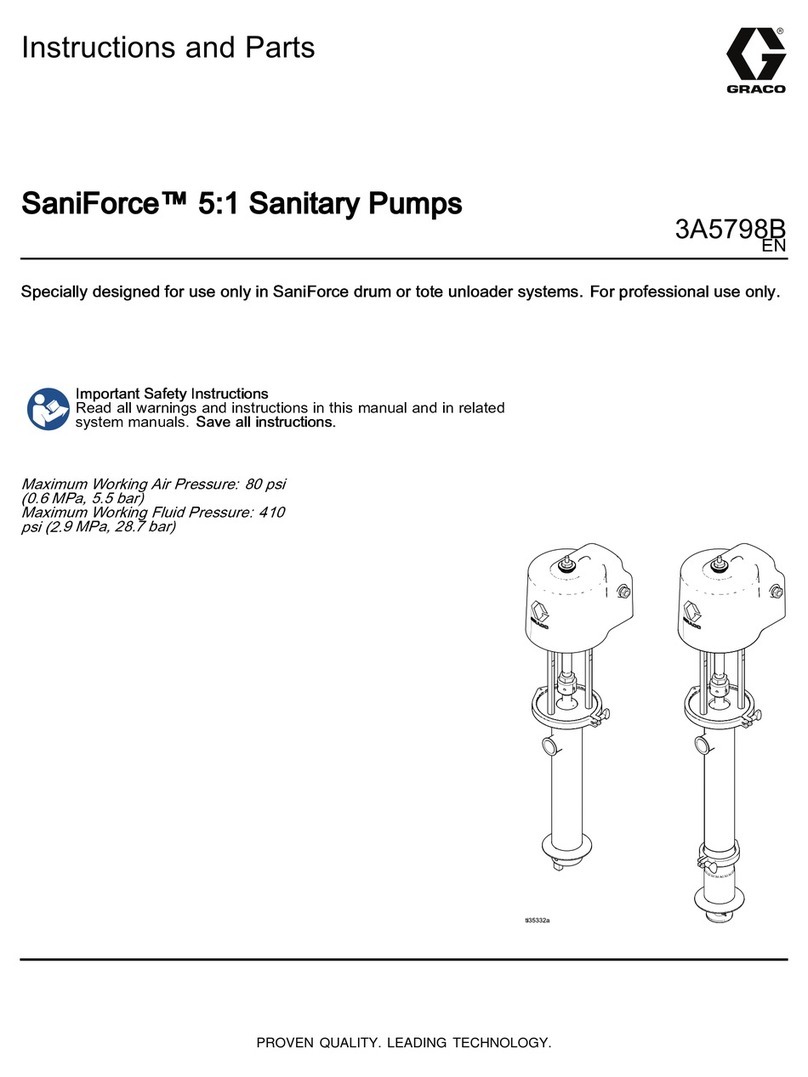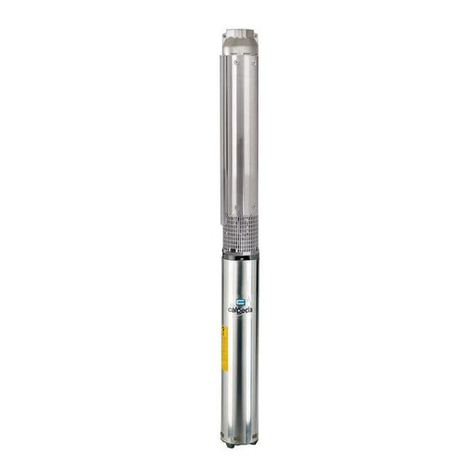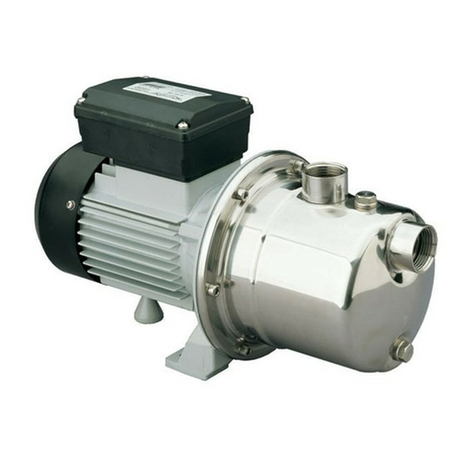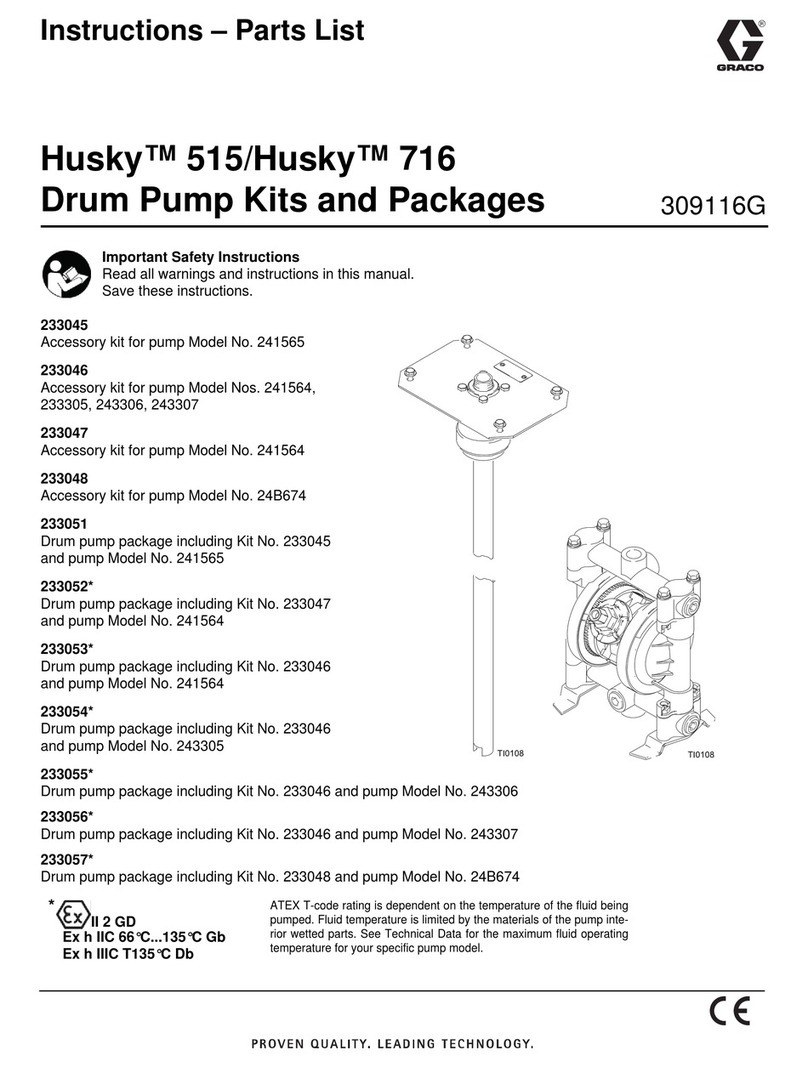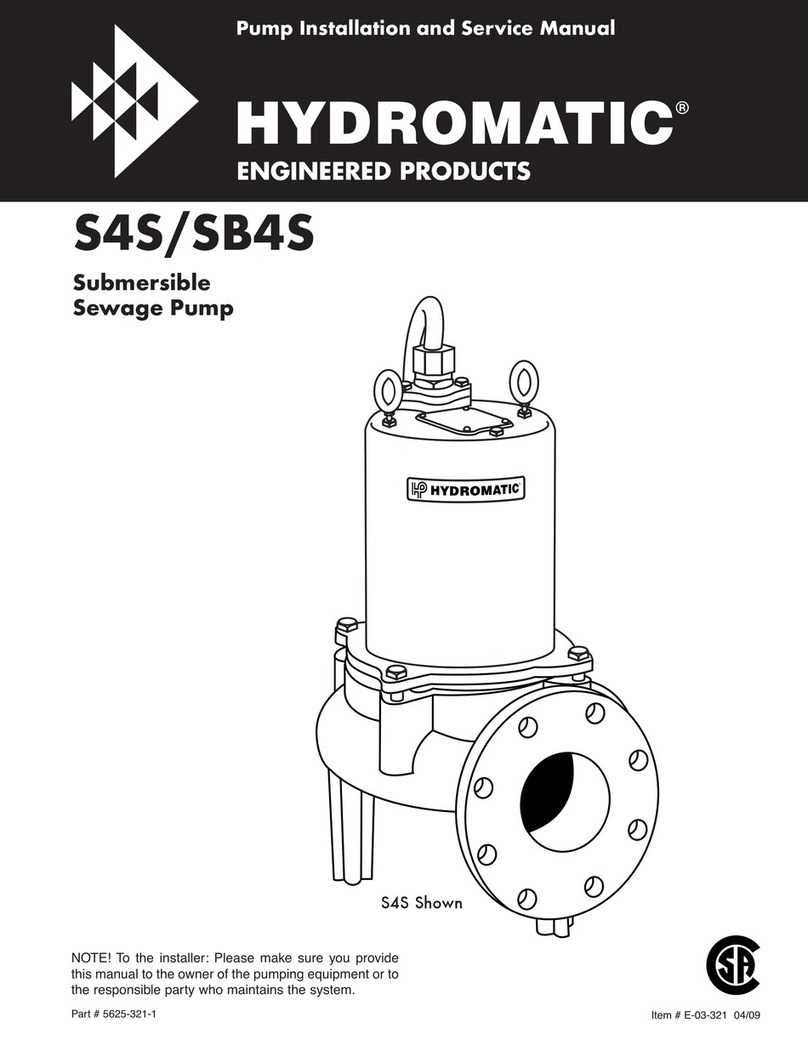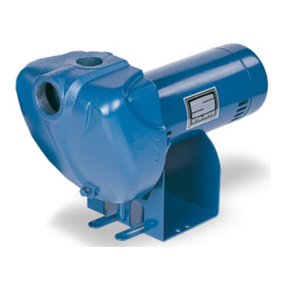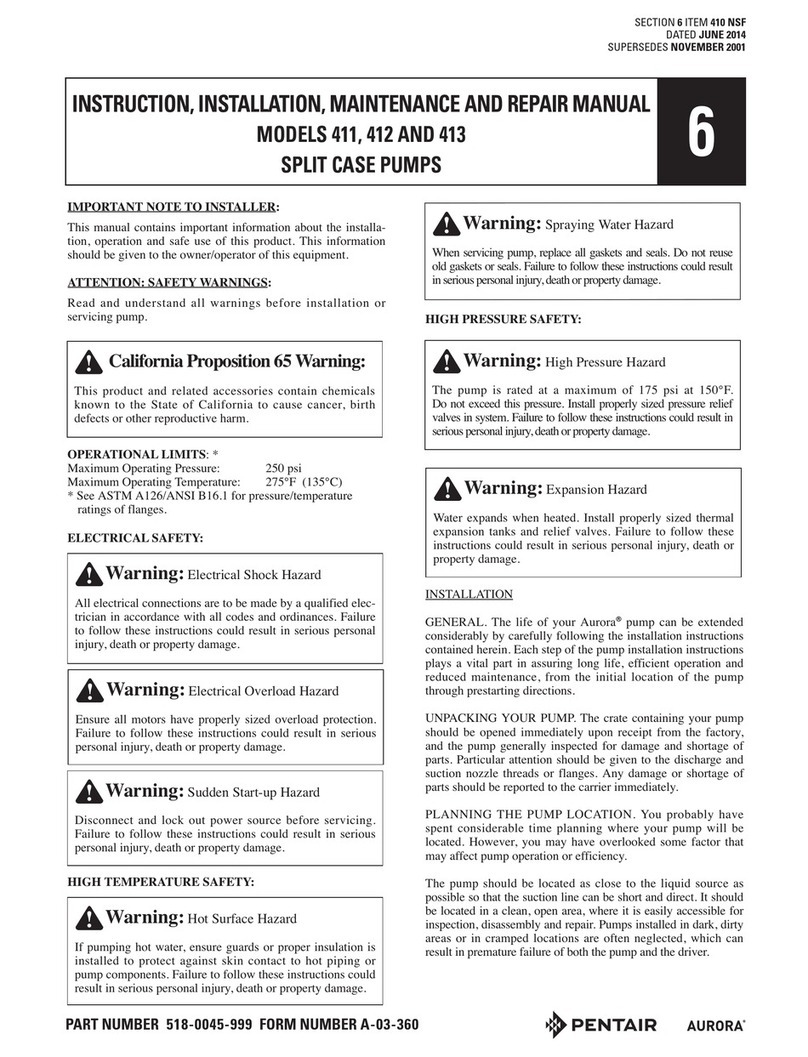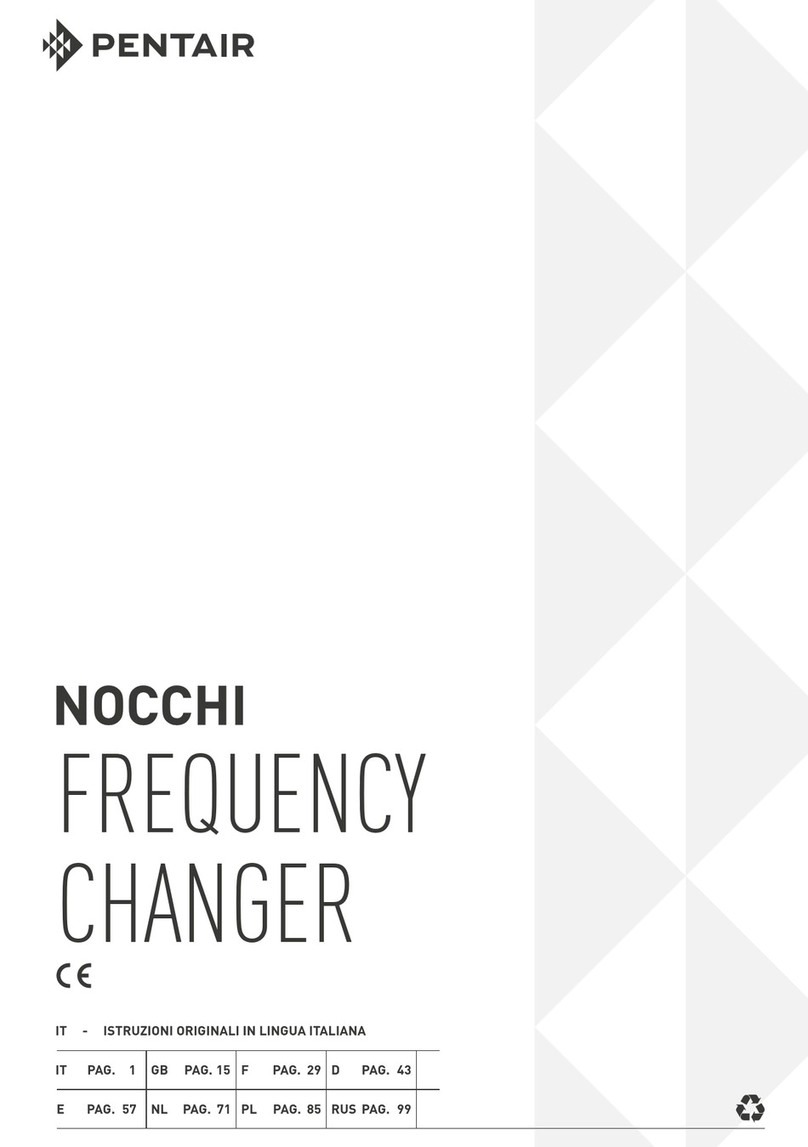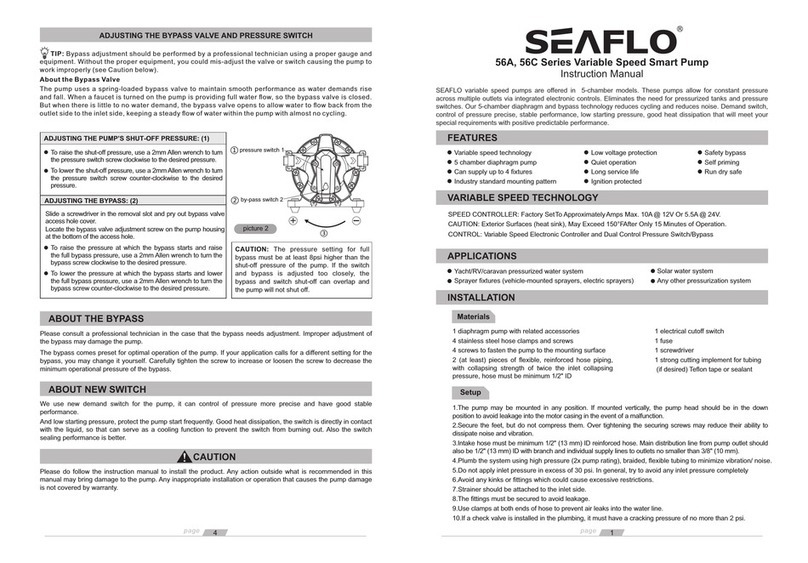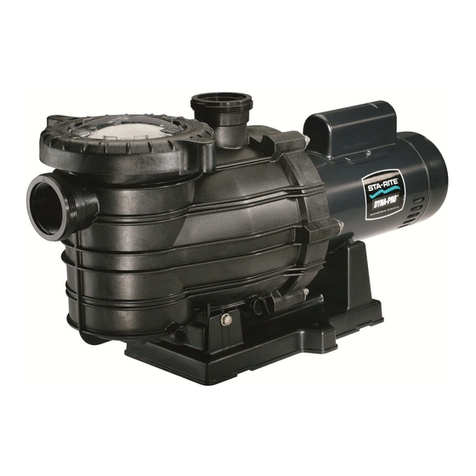
15
Suction piping is often large, heavy (especially when
filled with liquid), and tends to vibrate. Proper solid
supports are recommended. A suction hose located
near the pump will isolate these effects, protecting
the pump from the forces and moments that piping
weight creates.
New suction piping systems should be flushed free
of pipe scale, welding slag, and dirt before starting
the pump. Hydrostatic testing to detect air leaks is
advisable. Proper choice of suction hose construction is
essential to avoid collapse of the hose liner.
Install a dry type compound gauge in the suction
line near the pumps which should fluctuate evenly. If
violently pulsating, this gauge indicates that the
pump is not fully primed, or that one or more valves
are inoperative.
ACCELERATION HEAD
A characteristic of all reciprocating pumps is the
imperative need to consider the effects of acceleration
head. Acceleration head may be considered to be the
loss of available hydraulic head (energy) in the piping
system occurring because the demand by the pump
cylinders for liquid is not smooth and even. Because
the pump’s demand for liquid is cyclical, the velocity
of the liquid in the entire suction system is not truly
constant but varies in response to the combined
demand of the reciprocating plungers. The loss of
available hydraulic head is proportional to the speed
(RPM) of the crankshaft, the average liquid velocity
in the piping, the length of the suction piping, the
number of pumping chambers and the compressibility
of the liquid.
For a given pump, acceleration head effects may be
reduced by the use of the shortest possible suction line
sized to reduce liquid velocity to a very low speed.
Each pump should be fed by its own separate
individual piping system, free from the effects of
other pump cyclical demands for liquid.
DISCHARGE PIPING
A properly designed discharge piping system usually
prevents the need for a pulsation dampener. A good
discharge piping system includes a properly sized,
correctly set relief valve, a full opening discharge
gate or ball valve and a pressure gauge with gauge
dampener or snubber.
Locate the relief valve and pressure gauge ahead of any
block valve so that the pressure in the pump is always
reflected at the relief valve. The relieving capacity
of the relief valve must exceed the capacity of the
pump to avoid excessive pressure while relieving. Use
a full size relief line. To minimize vibration (whether
hydraulic or mechanical), discharge lines should be
kept short, direct, well supported and solidly anchored.
BYPASS PIPING
A reciprocating pump, especially after maintenance
of the valves or plungers, starts with one or more fluid
chambers full of air. Pumps operating on propane,
butane, or other volatile liquids start with vapor in the
fluid chamber(s).
Positive displacement pumps do not automatically
purge themselves of air and gas after shutdown.
For example, a quintuplex plunger pump will, after
servicing, expel the air in four of the five pump
chambers. Thus, the pressure from four of the “active”
cylinders will keep shut the discharge valve of the
“inactive”, or “air bound,” cylinder. Then, the air or
gas in this cylinder will be compressed and expanded
by its reciprocating plunger and never leave the
chamber. Similar effects occur in duplex and
triplex pumps.
To overcome these difficulties, adequate provision for
expelling the gas in the “air bound” cylinders must
be present. Common practice is to totally relieve the
pump of all discharge pressure during the start-up,
after servicing.
Consider the operational advantage of a full-sized
bypass line (return to tank) which substantially removes
discharge pressure from all cylinders during the start.
This requires a block valve on the discharge side and a
full opening bypass valve on the other side.
The bypass (to tank) can be combined with the relief
valve discharge line. This line must be full-sized, well
supported, and sloped downward to avoid freezing in
cold weather.
The ability of a reciprocating pump to be self-priming
depends on the ratio of the swept (displaced) volume in
the cylinder to the unswept (clearance) volume at the
end of the stroke. This depends on the design of the
fluid end and on the plunger size selected.
Choice of the largest size plunger for a particular fluid
end improves this compression ratio and so leads to
self priming, or easy priming. Choice of the minimum
size plunger sometimes leads to difficulties, especially
with pumps that require frequent servicing, or which
handle volatile liquids, or which contain substantial
amounts of dissolved air or gas.
An automatic bypass and purging system for these
applications may be merited.























